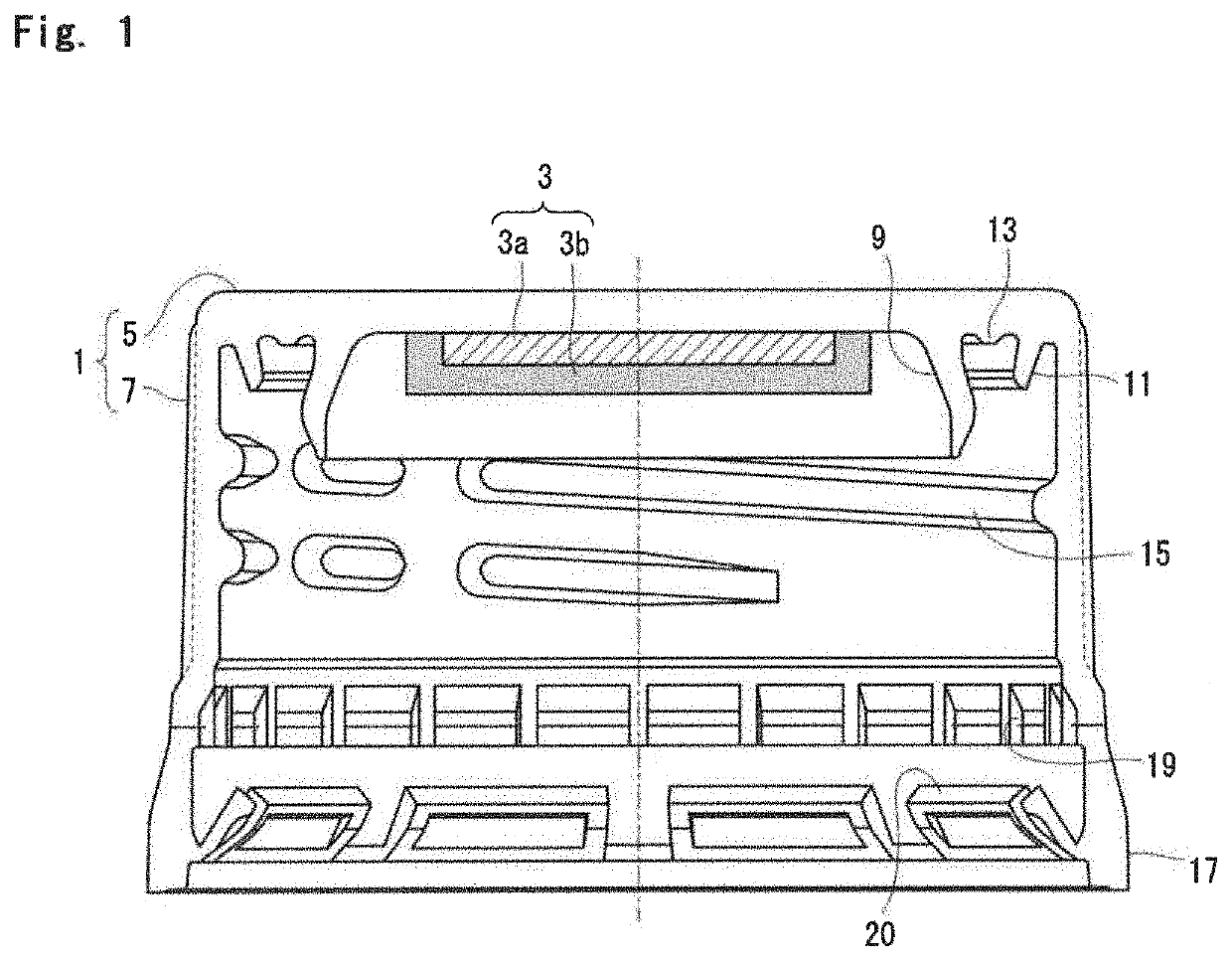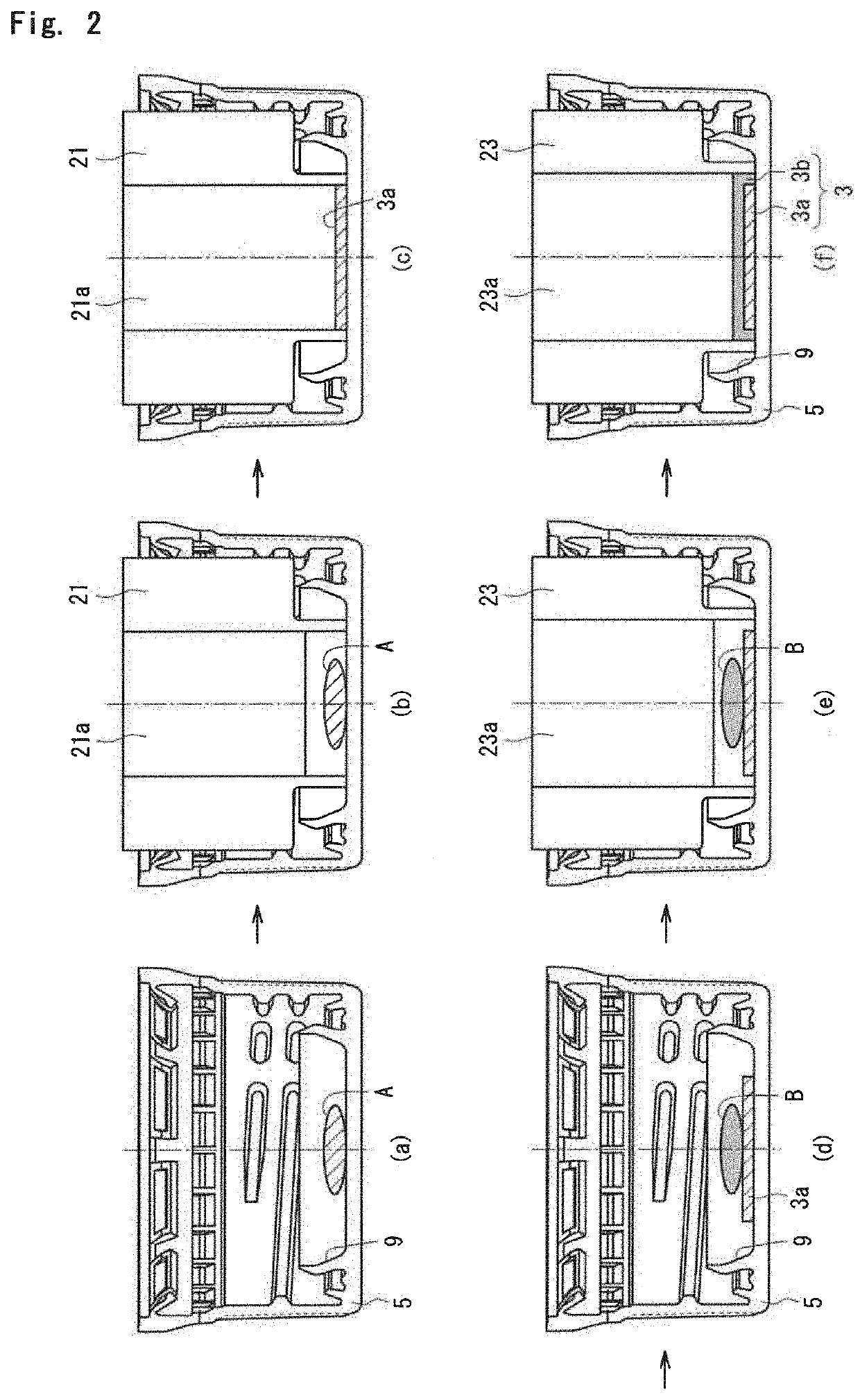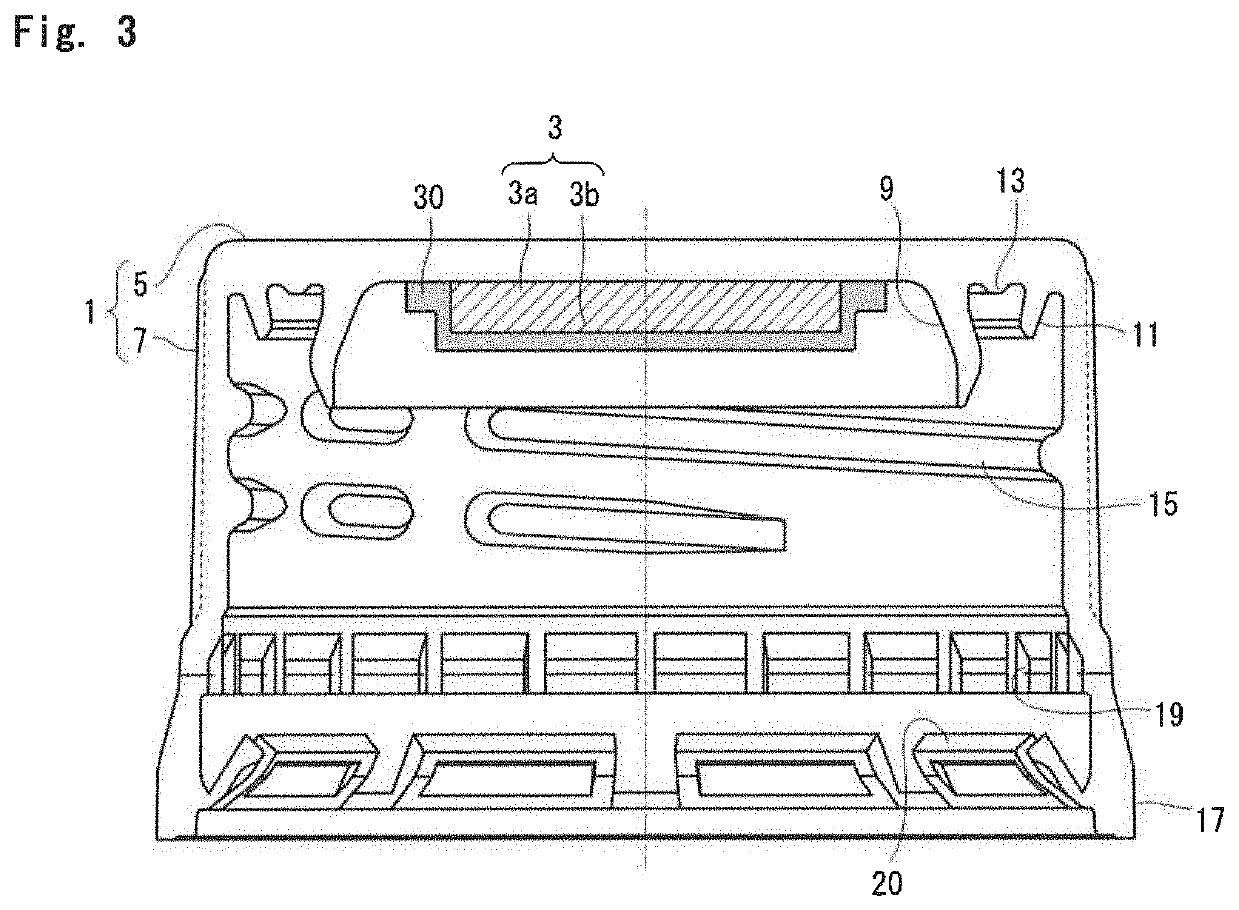Container lid having oxygen shielding properties
a container lid and oxygen shielding technology, applied in the field of container lids, can solve the problems of low oxygen shielding properties of plastic caps, difficult to mold caps without impairing their originals, unrealistic adoption of multi-layer structures, etc., to suppress the exhaustion of oxygen shielding properties, prevent the function of functional materials from declining, and display stably.
- Summary
- Abstract
- Description
- Claims
- Application Information
AI Technical Summary
Benefits of technology
Problems solved by technology
Method used
Image
Examples
example 1
[0092]The following LLDPE was provided:
[0093]LLDPE:[0094]UF240, produced by Japan Polyethylene Corporation[0095]Density: 0.920 g / cm3 [0096]MFR: 2.1 g / 10 min (190° C.)[0097]Melting point: 123.0° C.[0098]Nominal tensile strain at break (JIS K-6922-2): 500%
[0099]The above LLDPE was charged into a melt extruder, and melt-extruded from a molten resin feed hole. The extrudate was cut by a rotary blade provided at the exit of the feed hole. The resulting cut molten resin at 250° C. was dropped onto the center of the primary molded body of the above-mentioned testing cap (amount of the molten resin: 145 mg). The dropped resin was molded by in-shell molding into a secondary molded body (length of the flange: 1 mm) of a shape as shown in FIG. 3. In this manner, a container lid was prepared.
[0100]At the time of the above molding, the molten resin was stably dropped onto the center of the primary molded body, and the droppability of the molten resin was very satisfactory. Also, the molten resin...
example 2
[0102]The following thermoplastic elastomer was provided:
[0103]Thermoplastic elastomer (EBR):[0104]Ethylene-butylene copolymer (A-40905, produced by Mitsui Chemicals, Inc.)[0105]Density: 0.893 g / cm3 [0106]MFR: 3.6 g / 10 min (190° C.)[0107]Melting point: 77.0° C.[0108]Nominal tensile strain at break (JIS K-6922-2): 783%
[0109]90 Parts by mass of the LLDPE used in Example 1 and 10 parts by mass of the thermoplastic elastomer were dry-blended, melt-kneaded using the melt extruder, and extruded from the molten resin feed hole. In the same manner as in Example 1, the extrudate was cut, and the resulting cut molten resin at 250° C. was dropped onto the center of the primary molded body of the testing cap. The dropped resin was molded by in-shell molding into a secondary molded body of the shape shown in FIG. 3. In this manner, a container lid was prepared.
[0110]The above blend of the LLDPE and the thermoplastic elastomer had a density of 0.917 g / cm3, MFR (190° C.) of 2.3 g / 10 min, and a nom...
example 3
[0113]A secondary molded body was molded by inner molding in exactly the same manner as in Example 2, except that 85 parts by mass of the LLDPE and 15 parts by mass of the thermoplastic elastomer (EBR) were dry-blended. In this manner, a container lid was obtained, and its evaluation was conducted.
[0114]The above blend of the LLDPE and the thermoplastic elastomer had a density of 0.916 g / cm3, MFR (190° C.) of 2.3 g / 10 min, and a nominal tensile strain at break of 542.5%
[0115]At the time of the above molding, the molten resin was stably dropped onto the center of the primary molded body, and the droppability of the molten resin was very satisfactory, as in Example 1. Also, as in Example 1, the molten resin could be stably cut, was stably held without extending off from the site on the primary molded body, and was moldable so as to completely cover the primary molded body without causing supply failure.
[0116]The resulting container lid was subjected to an adhesiveness test, as in Exam...
PUM
| Property | Measurement | Unit |
|---|---|---|
| tensile strain at break | aaaaa | aaaaa |
| density | aaaaa | aaaaa |
| density | aaaaa | aaaaa |
Abstract
Description
Claims
Application Information
 Login to View More
Login to View More - R&D
- Intellectual Property
- Life Sciences
- Materials
- Tech Scout
- Unparalleled Data Quality
- Higher Quality Content
- 60% Fewer Hallucinations
Browse by: Latest US Patents, China's latest patents, Technical Efficacy Thesaurus, Application Domain, Technology Topic, Popular Technical Reports.
© 2025 PatSnap. All rights reserved.Legal|Privacy policy|Modern Slavery Act Transparency Statement|Sitemap|About US| Contact US: help@patsnap.com



